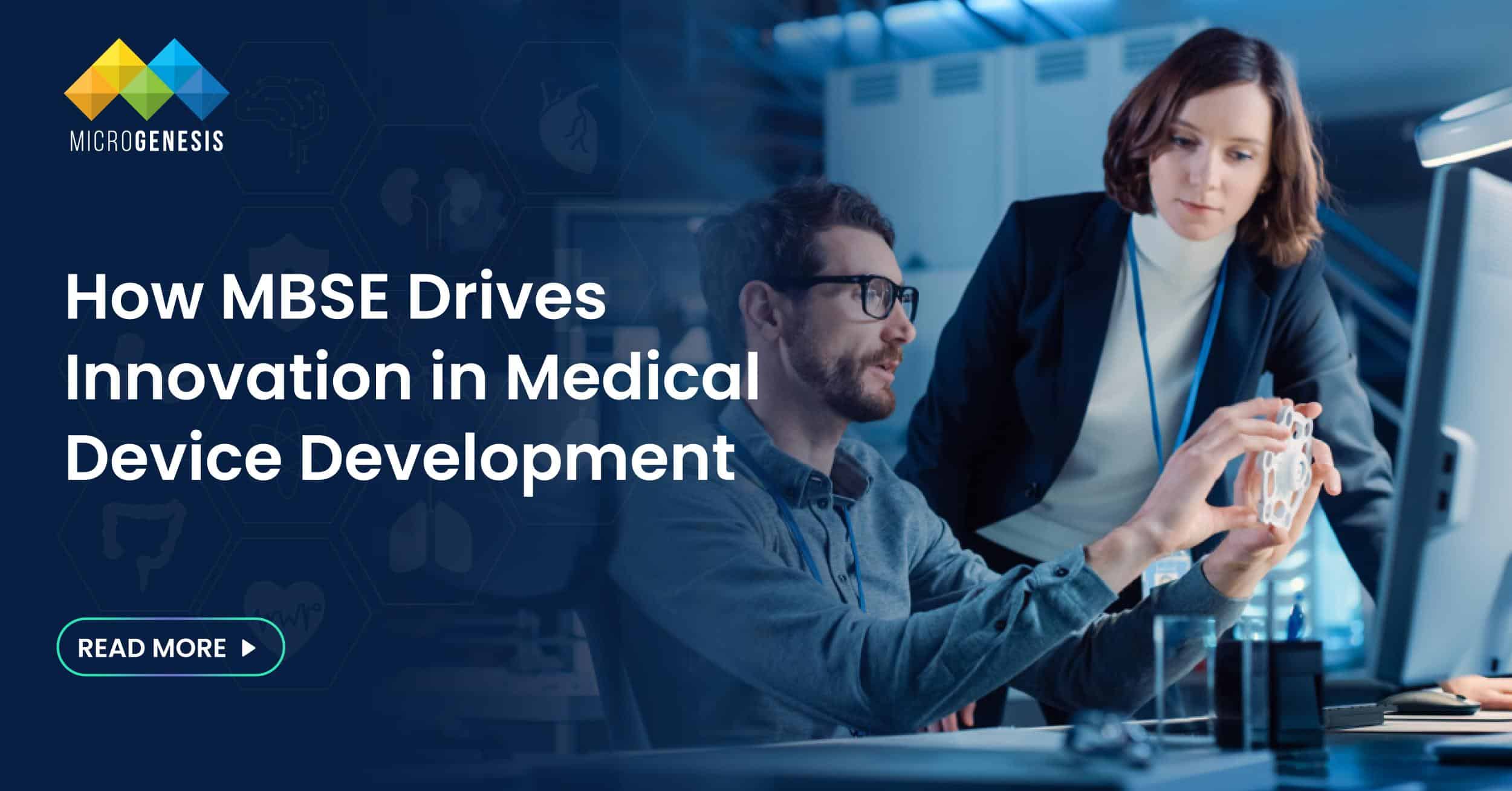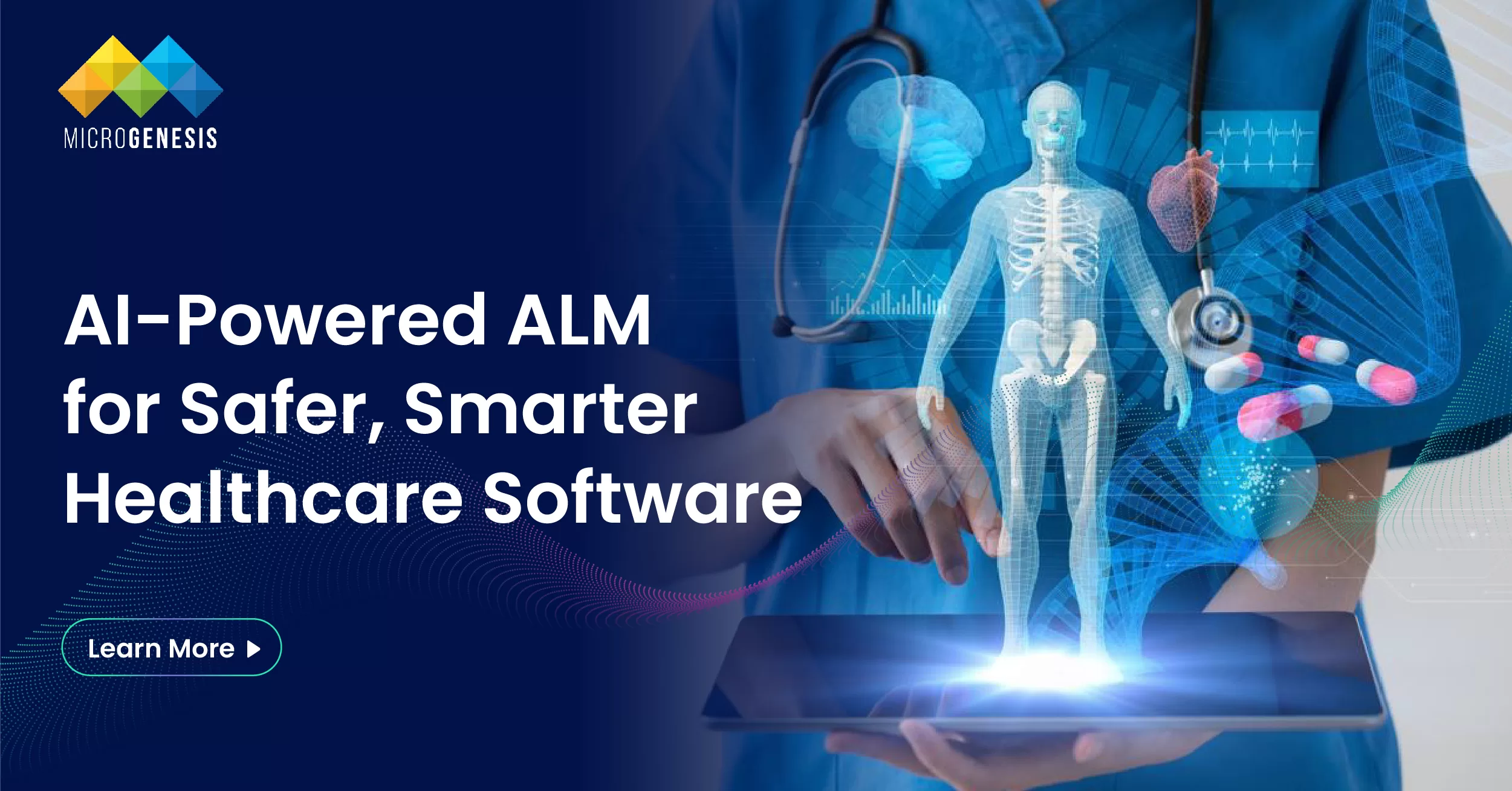The development of medical devices is a complex and highly regulated process that requires stringent standards of safety, reliability, and performance. As medical technologies evolve, the complexity of devices has increased, with many incorporating sophisticated software, electronics, and mechanical systems. To meet these demands and ensure compliance with regulatory standards like FDA, ISO 13485, and IEC 62304, the medical device industry is increasingly turning to Model-Based Systems Engineering (MBSE).
MBSE provides a structured, model-driven approach to systems engineering that integrates design, development, testing, and validation into a single cohesive framework. This blog explores how MBSE is transforming medical device development, its applications, and the key benefits it offers to device manufacturers.
The Role of MBSE in Medical Device Development
MBSE replaces traditional document-centric methods of engineering with model-based approaches that capture the entire development process in a centralized, visual model. This enables better collaboration across engineering disciplines and provides a single source of truth for the product lifecycle.
In the context of medical devices, MBSE is particularly valuable because of the strict requirements for traceability, safety, and verification. By integrating requirements management, system architecture, risk management, and verification into a unified model, MBSE enables more efficient and compliant product development.
1. Managing Complexity in Medical Devices
Modern medical devices often involve intricate designs with multiple interconnected subsystems, such as sensors, actuators, control software, and communication networks. MBSE helps manage this complexity by creating a comprehensive model that represents the device’s architecture, behavior, and interactions between components.
For example, devices like insulin pumps, pacemakers, or surgical robots require precise synchronization of hardware and software components. MBSE allows engineers to model these interactions and simulate their behavior under different conditions, ensuring the device performs reliably and safely.
2. Ensuring Compliance with Regulatory Standards
Medical devices must meet stringent regulatory requirements to ensure patient safety and device efficacy. Standards such as ISO 13485 for quality management systems and IEC 62304 for software lifecycle processes mandate detailed documentation and traceability of system requirements, design, and verification.
MBSE facilitates compliance by providing a traceable link between system requirements, design elements, risk analysis, and verification results. This traceability is essential during audits and regulatory submissions, as it allows manufacturers to demonstrate that all requirements have been met and risks have been adequately mitigated.
3. Enhancing Collaboration Across Disciplines
Medical device development involves collaboration between multiple engineering disciplines, including mechanical, electrical, and software engineering, as well as regulatory affairs and clinical experts. MBSE provides a unified model that bridges the gap between these teams, enabling them to collaborate more effectively.
By visualizing the entire system architecture and requirements in a central model, MBSE ensures that all stakeholders have a clear understanding of the product’s design and functionality. This reduces misunderstandings and miscommunication, leading to fewer errors and rework.
Applications of MBSE in Medical Device Development
MBSE is applied across various stages of the medical device development lifecycle, from conceptual design to validation and post-market surveillance. Some key applications include:
1. Requirements Management and Traceability
Medical devices must adhere to a wide range of requirements, including functional, performance, safety, and usability requirements. MBSE enables detailed management of these requirements and ensures that they are consistently traced to system design, risk management, and verification activities.
For instance, in the development of a wearable glucose monitor, MBSE can be used to trace requirements for sensor accuracy, battery life, and data security to specific design components and verification tests. This ensures that all requirements are properly implemented and verified before the device is released to market.
2. Risk Management and Hazard Analysis
Risk management is a critical component of medical device development, particularly in ensuring compliance with ISO 14971, the international standard for risk management in medical devices. MBSE allows for systematic risk analysis by linking potential hazards to system components and mitigation measures.
In a device like an automated drug delivery system, MBSE can model potential failure modes, such as sensor malfunctions or software errors, and simulate their impact on the overall system. This helps engineers identify and mitigate risks early in the design process, reducing the likelihood of costly recalls or safety issues later on.
3. System Architecture and Design Optimization
MBSE provides a clear visualization of the system architecture, helping teams optimize the design of medical devices. This includes the integration of hardware, software, and communication systems. For example, in a surgical robot, MBSE allows engineers to model the interaction between sensors, actuators, and control algorithms to ensure precision and reliability during surgical procedures.
MBSE also enables simulation of different design configurations, allowing teams to explore design trade-offs and select the optimal solution based on performance, cost, and regulatory requirements.
4. Verification and Validation
Verification and validation (V&V) are essential steps in medical device development to ensure that the device meets its intended purpose and complies with regulatory standards. MBSE supports V&V by linking requirements and design elements to specific test cases and verification activities.
In the development of an implantable cardiac device, MBSE can model the expected behavior of the device under different operating conditions and simulate its performance in virtual environments. This helps engineers verify that the device will function as intended before physical testing begins, reducing the risk of design flaws and improving product quality.
5. Post-Market Surveillance and Maintenance
After a medical device is released to the market, it must undergo continuous monitoring to ensure safety and effectiveness. MBSE provides a framework for integrating real-world performance data into the system model, allowing manufacturers to assess device performance and make necessary adjustments over time.
For example, a connected medical device that transmits data to healthcare providers can use MBSE to model and monitor data flows, ensuring that the device complies with data privacy regulations and performs reliably in the field.
Dig deeper: Introduction to Systems Modeling Language (SysML)
Key Benefits of MBSE in Medical Device Development
1. Improved Design Quality
By providing a clear, visual representation of the entire system, MBSE enables teams to identify potential design flaws early in the development process. This leads to higher-quality designs that are more reliable and easier to verify, ultimately resulting in safer and more effective medical devices.
2. Streamlined Regulatory Compliance
One of the most significant benefits of MBSE is its ability to streamline regulatory compliance. The traceability offered by MBSE ensures that all system requirements, risks, and verifications are clearly documented, making it easier to prepare regulatory submissions and pass audits.
3. Reduced Development Time and Costs
MBSE allows for early detection of design issues and provides a framework for virtual testing and simulation. This reduces the need for physical prototypes and accelerates the development process, leading to cost savings and faster time to market.
4. Better Risk Management
MBSE integrates risk analysis directly into the design process, enabling engineers to identify, assess, and mitigate potential hazards early in development. This proactive approach to risk management reduces the likelihood of post-market failures and product recalls.
5. Enhanced Collaboration and Communication
MBSE fosters collaboration across engineering disciplines by providing a single, unified model that all stakeholders can reference. This reduces misunderstandings and ensures that everyone is working toward the same objectives, improving efficiency and reducing errors.
MBSE Tools for Medical Device Development
Several tools support MBSE in medical device development, providing features such as system modeling, requirements management, risk analysis, and verification. Some of the most commonly used tools include:
1. PTC Windchill and Codebeamer
PTC Windchill and Codebeamer offer comprehensive product lifecycle management (PLM) and application lifecycle management (ALM) capabilities, including support for medical device regulatory compliance and traceability.
2. IBM Rational Rhapsody
IBM Rational Rhapsody provides robust system modeling capabilities for medical devices, including support for SysML and UML. It helps manage complexity and integrates with other tools to ensure a seamless development process.
3. Siemens Polarion
Siemens Polarion offers ALM capabilities with integrated support for MBSE, helping medical device manufacturers manage requirements, risks, and verification activities in a traceable and compliant manner.
4. Cameo Systems Modeler
Cameo Systems Modeler, part of the MagicDraw family, is widely used for system architecture modeling and supports MBSE standards like SysML. It integrates with simulation tools to validate system behavior.
5. Enterprise Architect
Enterprise Architect offers a cost-effective solution for MBSE and supports requirements management, system architecture design, and documentation. It is used by medical device manufacturers to ensure compliance with regulatory standards.
Conclusion: MBSE as a Game-Changer in Medical Device Development
MBSE is transforming the way medical devices are designed, developed, and brought to market. By providing a unified, model-driven approach to systems engineering, MBSE enables manufacturers to manage complexity, ensure compliance, and improve collaboration across teams.
MicroGenesis, a leading software development company, is a Partner with PTC, offering licensing, consulting, and training services for Codebeamer ALM and Windchill PLM, both of which provide robust solutions for managing complexity and ensuring regulatory compliance in medical device development. Additionally, MicroGenesis has been a trusted partner with IBM for over 16 years, specializing in the successful implementation of IBM ELM tools. We offer licensing, consulting, and training services to help our clients leverage these powerful MBSE tools for seamless and efficient medical device development.




